Interview with Hyapatia Lee, Founder of Native Strength: Part II
Native Strength is not a cure so much as it is a path toward self-healing; Hyapatia Lee developed her private practice into a system that empowers people to find the cure within themselves.
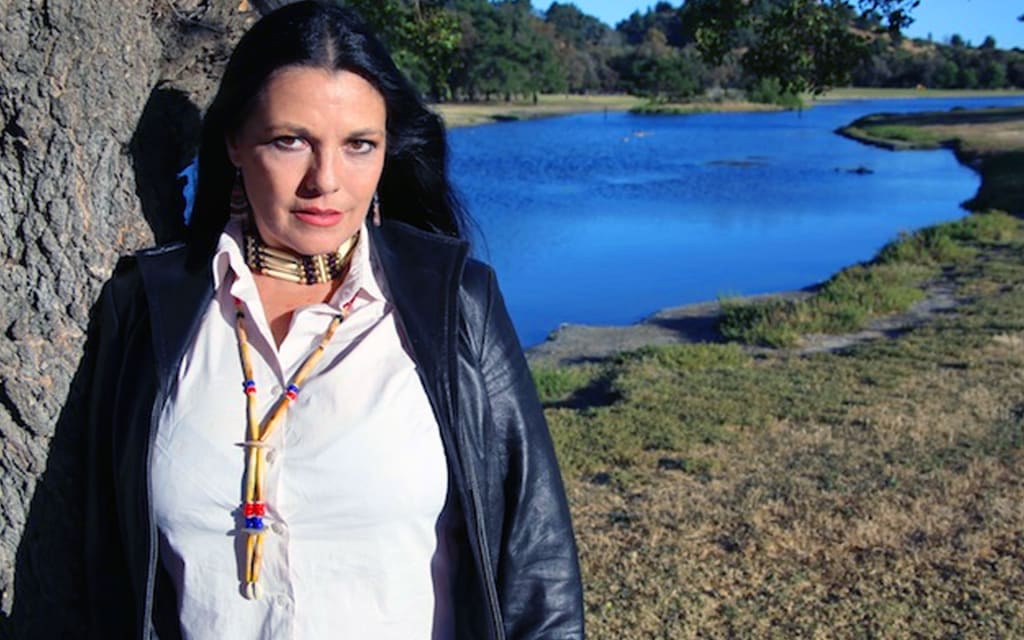
Read Part I of the interview with Hypatia Lee
Longevity had the opportunity to interview Hyapatia Lee, the founder of Native Strength, a set of techniques based on ancient Native American wisdom that promotes self-healing and emotional strength. The conversation pivots from that of Part I of the interview. Now, Hyapatia continues to recount the journey that led her to where she is now, and speaks to the origin of Native Strength methodology, her relationship to Native American communities and her staunch insistence on open-source wisdom.
Longevity: Of the countless atrocities and sources of human suffering in the world, which doctrine/ideology do you feel is the single most evil and dangerous for humanity?
Hyapatia Lee: The false belief of separation is the most dangerous. We are all part of this planet, a single organism, and we are also connected to each other. We may be as individual as blood cells, but we are all the same in fundamental ways. If we were able to see this connection and treat our planet and others as we would treat ourselves, perhaps we could alleviate some suffering. Taking advantage of our Earth and polluting it is like cutting off our own nose to spite our face.
This leads to the second most dangerous ideology—denial of self. If we do not know ourselves fully and love ourselves, we will never be able to accept others and show them love. It is in learning to love ourselves that we discover how to forgive others and treat them with understanding and unconditional love.
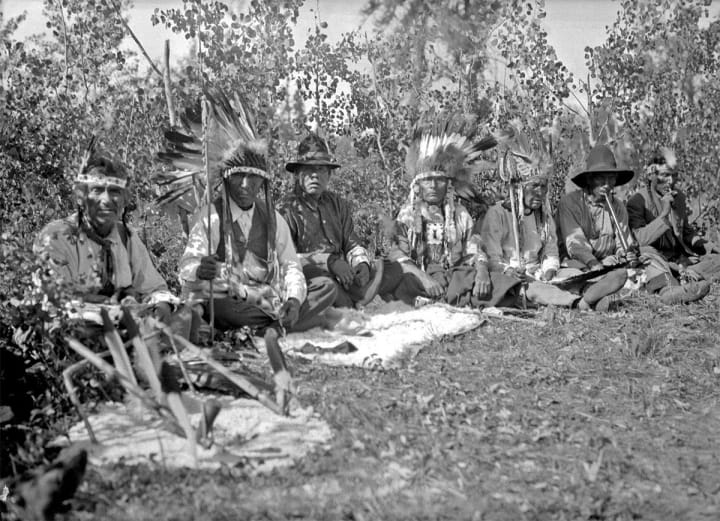
Native American Pipe Ceremony; (Cree and Métis men, Northern Saskatchewan, 1931)
Is there any facet of the Native culture or ritual that you believe should be kept within the bloodline, or do you wish to liberate all Native tradition and encourage anyone who resonates with the ideas to select the aspects of tradition that work for them?
The United States’ official policy on Native American culture is assimilation. They want us to adopt the predominant American cultural norms. The quickest way to wipe out a culture is to deny those without a significant blood amount of that culture the right to learn about it. This is precisely what the United States government has done. One must be able to prove a certain degree of Native blood to participate in certain ceremonies. There is no other culture, race, or religion on Earth that is denied to those who wish to learn about it. This is discrimination plain and simple and is designed to wipe my people from the face of the Earth. If people know how to resist emotional manipulation, those in power cannot easily provoke us into unnecessary wars or other actions through irrational fears. They have a vested interest in keeping this information from the public.
In the past, many people have charged large sums of money to give a sweat lodge or pipe ceremony to anyone who had the funds. Many of these people were not even properly taught by those who had experience with traditional methods and beliefs. Some just read books and improvised. While one can see that these people had great desire, they may not have been able to give the ceremonies the respect that they deserved. I have never charged for any of the healings or ceremonies over which I have presided. To do so would be to go against everything I have been taught and believe. That said, I do not feel as though Native religion should be reserved for those with quantum Native blood. My granddaughter is more white than Native. Does that mean I cannot pass on my traditions to her? She was sexually abused at the age of four. If anyone needs these teachings, it is her. It is this fact that prompted me to write my books and share this with the world. Again, a culture and a religion are wiped from the face of the Earth when people are forbidden to discuss it. Never forget, it was the government that first made these rules.
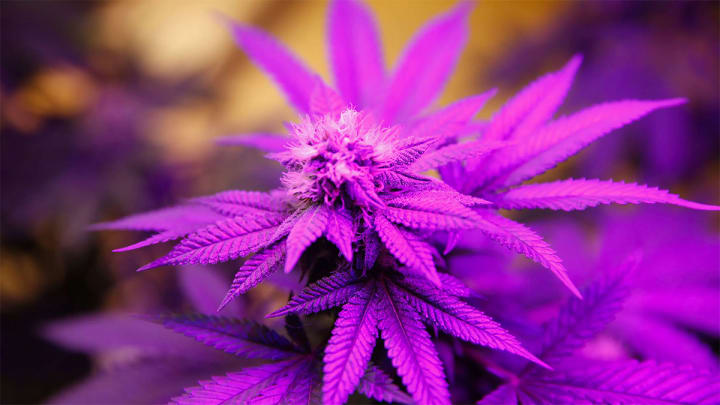
Cannabis and other substances are part and parcel of Native Strength and a tool for developing emotional maturity. What is your personal relationship with cannabis?
I use cannabis every day. It never makes me space out or escape reality but rather calms my overactive mind and emotions so that I am able to concentrate on one thing at a time. I am no longer distracted with thoughts of what happened years ago and how I may have better handled a situation I can no longer change. I am able to control my thoughts when they flash back to a traumatic event and I can bring myself back to the present. When I have seen something on the news or social media that makes me distraught, smoking slows my breathing and stops my hyperventilating or crying. With just a few puffs I am able to calm myself and put my mind back on the issues in my immediate world. I hear the voices of my wise elders telling me that I am okay and that what has upset me is not what I should be concerned with at the moment.
I think cannabis is most helpful to people like me who have suffered extremely traumatic events that have given them PTSD, anxiety attacks, depression, or those who may have hyperactivity disorder. Pot has never given me a sense of pure joy or euphoria but rather has helped to diminish feelings of despair and overwhelming fear, grief, frustration, and anger. It has enabled me to think clearly, pushing back the emotional tidal wave in my mind. With the help of cannabis I can stay in the present and concentrate on the tasks at hand. My adults are able to do their jobs without the distractions of troubling thoughts sneaking their way into my mind against my will. Cannabis makes the difference between having my mind full and being mindful.
Cannabis use in Native Strength is not for everyone. Some people cannot focus when they are “high.” Others get giddy and laugh at everything. There is nothing wrong with people using cannabis when it causes these types of reactions; they simply aren’t candidates for using cannabis in the Native Strength exercises.
You are clearly very in touch with the spiritual and philosophical roots of Native tradition, but are you currently involved or associated with the Cherokee tribe on a community level (i.e. cultural as opposed to spiritual) or federal advocacy? To what extent?
When I left Indiana to move to Colorado I also left behind my position as Blessed Woman for the Lost River Band of the Cherokees in Mitchell, Indiana. I have not been active with the Cherokee tribe in about four years. I do advocate for Native rights and just today (1/31/17) I did an interview with Joe Mata about the Dakota Access Pipe Line and other pipe lines, the water protectors at Standing Rock and how this all relates to Native prophesies.
Have you gotten any negative feedback from Native American organizational bodies or community leaders that feel your “open-source culture” and bloodline-agnostic philosophy could threaten legislation that protects tribes?
I have not gotten any negative feedback whatsoever from any of the Native American community leaders. I was contacted by a writer for Indian Country and we discussed many things. We agreed on many points concerning the teachings themselves and how our religion should never be for sale in any way. I have not heard from him again.
Native Americans are afforded very little protections and rights anymore. Even the tribal reservations have lost authority over their own land and people. There has never been a United States treaty with an Indian nation that has been honored. Every single one has been broken. The Mni Wiconi camp at Standing Rock is testament to this fact as burial grounds were desecrated to make way for a pipeline on tribal land given to the Sioux by the Treaty of Ft. Laramie. Natives from Hawaii, South and Central America and all over North America, including non-Natives, have come to show support for our earth.
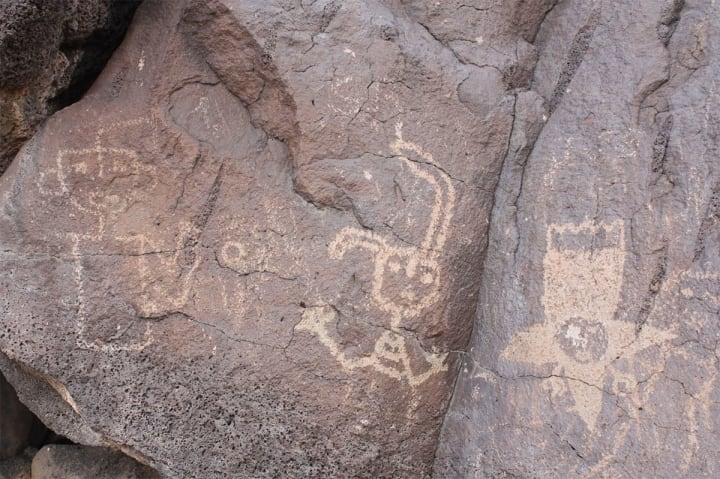
Ancient petroglyphs (rock carvings) by Native Americans depicting the extraterrestrial "Star People"
Your writings discuss how Native Americans have always had a close tie to extraterrestrials. Do you find that the pop-culturization of alien species and ET interaction in Science Fiction is dishonorable or an affront to tribal teachings, or is the portrayal of the two so different that it’s a non-issue?
I believe humanity is naturally drawn to our origins in the stars either subconsciously our consciously. It is only understandable that we would want to explore these thoughts and concepts in both science and science fiction. The only time I am the least bit offended is when my people and our rich culture is left out of the discussion. When our contributions are ignored in fiction, it is usually the result of a limited imagination. When Native culture is left out of factual discussions of aliens or Star People, it shows ignorance. It is my hope to enlighten those who may not have known about the deep connection Native Americans have always had to Star People. I feel the knowledge we have been given from them is too important not to be shared with all of humanity.
You describe having first learned of this centuries-old healing system in 1986 from “medicine men and women” across many US states: What was the original notion of the system, and which threads of that did you develop into what you then called Native Strength?
The first medicine man I met introduced me to the Wheel of Life, although he called it the Star Maiden Circle. I was intrigued but thought little of it. He also introduced me to the Flowering Tree which I also found in the book Seven Arrows by Hyemehohst Storm.
I studied herbal healing in Delaware with Gladys Tantaquideon whose brother Harold was the last chief of the Mohicans. I mentioned some of the Star Maiden Circle and she called it the Wheel of Life.
I sponsored a couple of girls on the Navajo reservation through Save the Children and visited them frequently. While there, I mentioned the things I had learned to them and, their mother and her sister. Again I was told the knowledge was valid with different wording, but they did call the Wheel of Life by the same name.
When I went to dance in Canada to promote my movies I met Jim S. (I do not have permission to share his name) who is Ojibwa, aka Chippewa. As before, I was given confirmation of what I had learned.
My career afforded me the opportunity to travel to other places in Canada, the United States, and Australia. I smoked my sacred ceremonial pipe with an Aboriginal woman by Lake St. George in New South Wales and heard about their culture. It was in Hawaii that I learned how similar their Huna is to the inner personas of our Flowering Tree. In Guam I was shocked to learn that their words for water and salt are exactly the same as our Cherokee words. This told me that there was a lot more interaction between peoples in the western hemisphere than our history books have told us. Otherwise, this system could not have been known from Canada to Australia and from Hawaii to the Great Smokey Mountains.
I use the Flowering Tree and the Wheel of Life as just two examples, but the other similarities that I discovered along the way are far too numerous to be mentioned here.
What Is the goal of Native Strength? What is the significance of age in Native Strength?
The adults are not bad, they simply get all the attention. The adults are busy working, taking care of others, and doing all the things that need to get done. They rarely get a break. Similarly, the children and elders are often pushed aside in order to meet the days’ requirements and they do not get their needs met. These personas have jobs to do and if we do not allow them to come forward, they cannot do their work. We will be out of balance.
The followers of Huna in Hawaii believe that it is only by silencing the adults that the children are able to communicate with the elders who in turn can have direct conversations with the Creator.
It is generally accepted that, in Native tradition, age signifies wisdom. In teaching stories wisdom is often measured by the length of ones’ white braids, for example. The elder personas are the wiser parts of our self, while the children embody the characteristics of youth. They are eager to explore, full of trust and innocence and have an enthusiasm for life and a need to find beauty. Our adults are preoccupied with adult issues like bills, deadlines, our responsibilities and such.
Is Native Strength a religion per se? And, is the ideology compatible with other religious practice or do some followers of this tradition adopt certain practical tools but the the entire belief system?
Native Strength is not a religion; it is a part of Native inter-tribal culture that focuses on mental health. I have specifically avoided religious connotations and ceremonies for many reasons. Native Strength is an alternative to the contemporary mental health care system. It offers cannabis instead of pharmaceuticals for those who feel as though they need it.
Native Americans have always used plants to treat disease and all of our drugs found their origins in plants. There is a Cherokee story that tells why diseases were created and how all the plants provide cures for every disease. Cherokees also believe cannabis was given to us by the Star People so it is especially revered.
What is the organizational structure of the Native Strength ideology (if any)? If the overall goal is self-awareness and self-help, is there a hierarchy at all, or just someone like you who teaches the way of life to others?
Everyone is on their own individual path, progressing at their own pace. Since no two people are alike, there is a vast difference in the needs of individuals. Some, like me, will need tremendous help to work through their emotional turmoil. Others may be able to find happiness just from reading my books. For those who need individual help teachers should be made available to guide people to the particular medicine wheels that will bring them the most immediate relief from their suffering.
We all have what I call Fear Feeders. A Cherokee story best explains this. A grandfather tells his grandson that we each have two wolves inside of us. One is angry, bitter and resentful. He says mean things and he judges people. The other is kind, loving and forgiving. He is good to others and shares what he has with them. The two are always fighting. The grandson thinks about this for a moment and then asks “Which one wins?”
The wise grandfather replies “The one you feed.”
When we hear the voice in our head say mean things to our self or about others, we are feeding the fear. People often need help with this and that is why individual teachers are essential for those who are suffering to find quick relief. We say mean judgmental things about others because we are afraid they will judge us to be inferior. We say mean things to ourselves because we believe we deserve mistreatment. We cannot feed these fears or they will grow and become louder and more persistent.
If we have regret over an issue that has caused us to judge ourselves as inferior, there are medicine wheels for discovering what caused us to feel this way and fixing the situation. After that, there are lessons for letting go of guilt, blame, and shame. These emotions are only useful for affecting change. Once the change has occurred, they need to be abandoned. They are only useful if we are tempted to revisit the behavior.
Some people have false personas who pretend to be voices of authority but who actually have irrational thinking. Teachers are essential for helping one to identify these false personas and following their irrational thinking through to its logical conclusion to enable sufferers to recognize the persona is indeed false. It can be difficult for people in the grips of overwhelming emotions to identify these properly and discover the logical conclusions of such thinking. Teachers can help sufferers to identify their true inner elders.
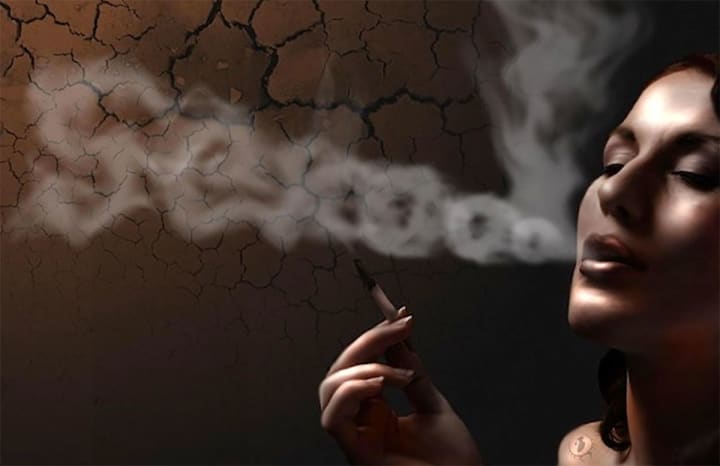
Image courtesy of Hyapatia Lee/High Times
What specifically inspired you to focus on the intersection of pot and sex for your High Times column, other than it draws from two major components of your life? What surprised you most by the submissions you’ve received from readers?
I wrote a sexual advice column for Cheri magazine for five years back in the eighties and nineties. After taking time off to study with my teachers and raise my children, I felt the best way to re-enter the work force was to begin with something familiar.
The most surprising thing to me was the number of people who are seeking relationship advice. There are many sexual issues, such as frequency and variety, which actually have more to do with interpersonal relationships, boundaries, and respect than actual sex.
About the Creator
Longevity Staff
In all modes and aspects, a group of shape shifters committed to spreading the gospel of health and wellness.


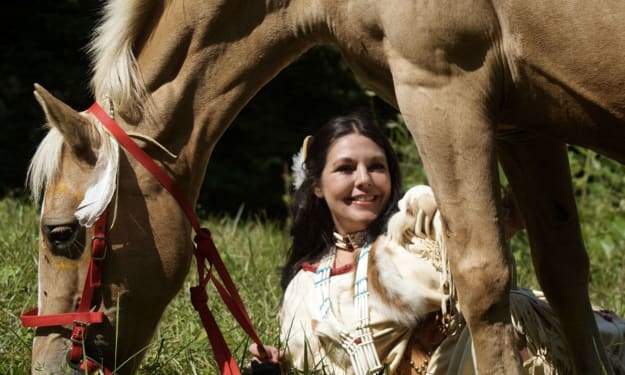



Comments
There are no comments for this story
Be the first to respond and start the conversation.